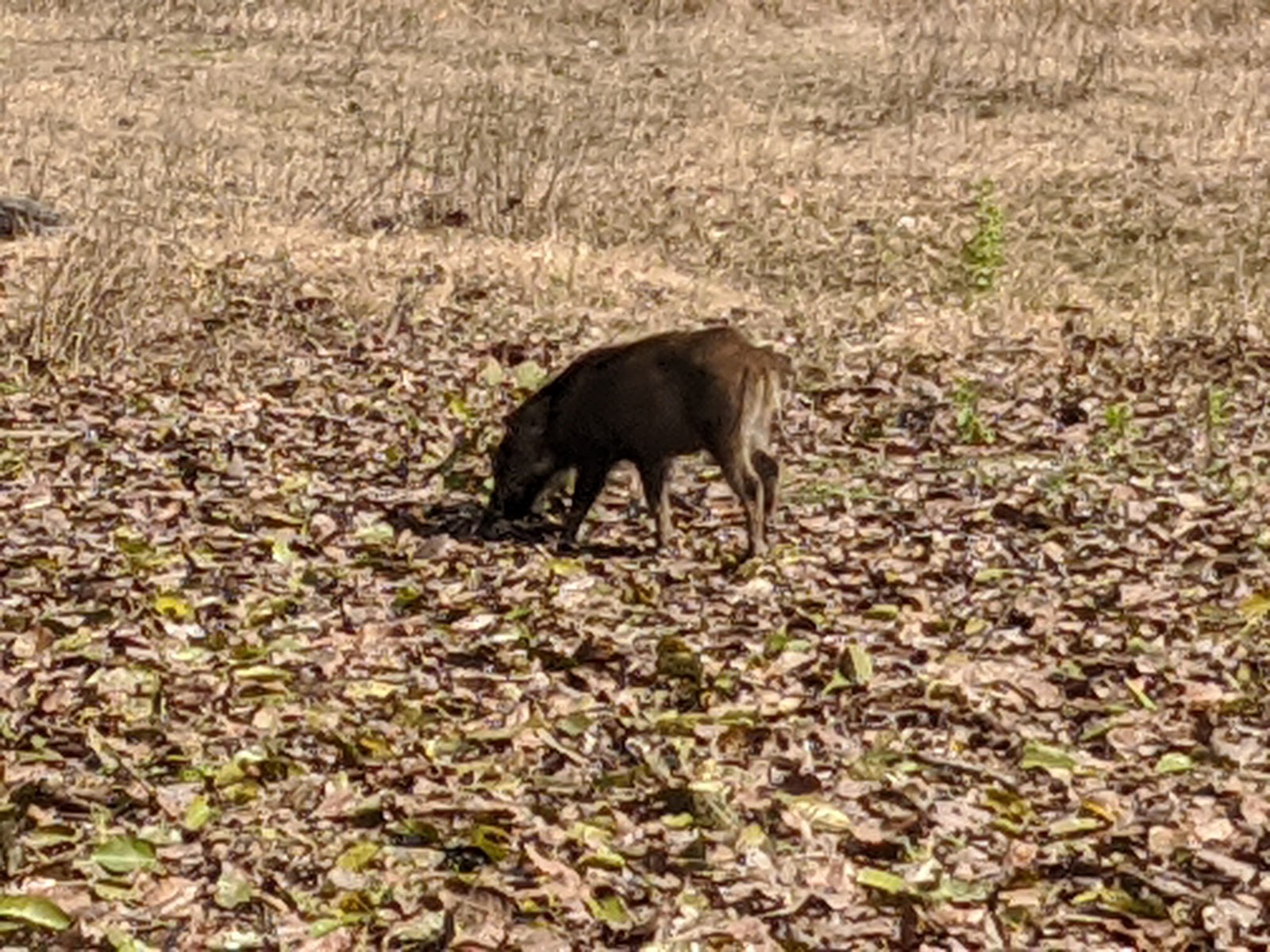 |
| A gaur was crossing the road. “The gaur (/ɡaʊər/, Bos gaurus), also called the Indian bison, is the largest extant bovine. It is native to South and Southeast Asia and has been listed as Vulnerable on the IUCN Red List since 1986. The global population has been estimated at a maximum of 21,000 mature individuals by 2016. It declined by more than 70% during the last three generations and is extinct in Sri Lanka and Bangladesh. In well-protected areas, it is stable and rebuilding.” |
It’s leap year day. I don’t have a “year ago photo” since there was no post on February 29th last year. But we’ve added a photo from the previous leap year four years ago, on February 29, 2016.
I recalled last year at the end of February like it was yesterday. I’d been home from the hospital for only three days, and my legs had yet to become infected but were very sore from the incisions from my ankle bones to about eight inches above my knees.
 |
| A pair of gaur, a rare sighting in the national parks, was a thrill to see. |
I’d been walking around the house every hour or so, hoping to speed my recovery but sensing I was making little progress.
The pain was excessive, my breathing sketchy and inconsistent, my wounds so raw I didn’t dare shower, doing sponge baths instead fearing infecting myself with the less than clean water in Marloth Park, South Africa. It happened anyway.
 |
| A black eagle. |
Even the smallest of tasks required hours of recovery. Tom did it all along with the help of our fantastic household staff, Zef, and Vusi who handled all the housework. I languished in my awful state of being, wondering if it would ever end.
 |
| A sambar deer. “Sambar deer is found in almost every corner of India, But it is mainly found in central India. They can easily be spotted at Kanha, Corbett, Ranthambore, Bandhavgarh (we’ve been to three of the aforementioned national parks in India) Gir, Dudhwa, Manas, Kaziranga, and Sariska. Habitat: Sambar deer prefers marshy and wooded areas to live.” |
It’s 10 hours a day of bouncing so hard in a safari Jeep that my FitBit measures 10’s of thousands of steps and hundreds of flights of stairs from the violent jostling about on rough roads.
 |
| Young wild boar. “The wild boar (Sus scrofa), also known as the wild swine, Common wild pig, or simply wild pig) is a suid native to much of the Palearctic, as well as introduced numbers in the Americas and Southeast Asia. Human intervention has spread its distribution further, making the species one of the widest-ranging mammals in the world, as well as the most widely spread uniform. Its wide range, high numbers, and adaptability mean that it is classed as least concern by the IUCN, and it has become an invasive species in part of its introduced range. The animal probably originated in Southeast Asia during the Early Pleistocene and out-competed other suid species as it spread throughout the Old World.” |
What’s next? Another month and a few days more of India, the vibrant rush of colors, and its equal passion for life.
 |
| Kanha Nation Park is truly beautiful with a wide range of types of scenery, all exquisite. |
Everything happens for a reason. I was already in awe and grateful. But I asked what I needed to learn—had I yet a new level of appreciation to discover, yet to conquer?
 |
| A sambar deer on the side of the road. |
At the moment, I am sitting outdoors in the resort in Kanha National Park, in India, with the sounds of nature surrounding me, her magical arms holding me close to her heart.
It’s not perfect. Like life, it is flawed. But I open my arms and welcome her in knowing full well that therein lies the answers to the mystery of life we all so long to learn. I am at peace.
 |
| Just like in Africa, the antelopes and pigs hang out together. |
See you then, my friends. We’ll see you then.
Photo from the last leap year, four years ago on February 29, 2016:
 |
| View of Mount Taranaki from a walk in the neighborhood while we lived on the alpaca farm in New Plymouth, New Zealand. For more photos, please click here. |

























































































